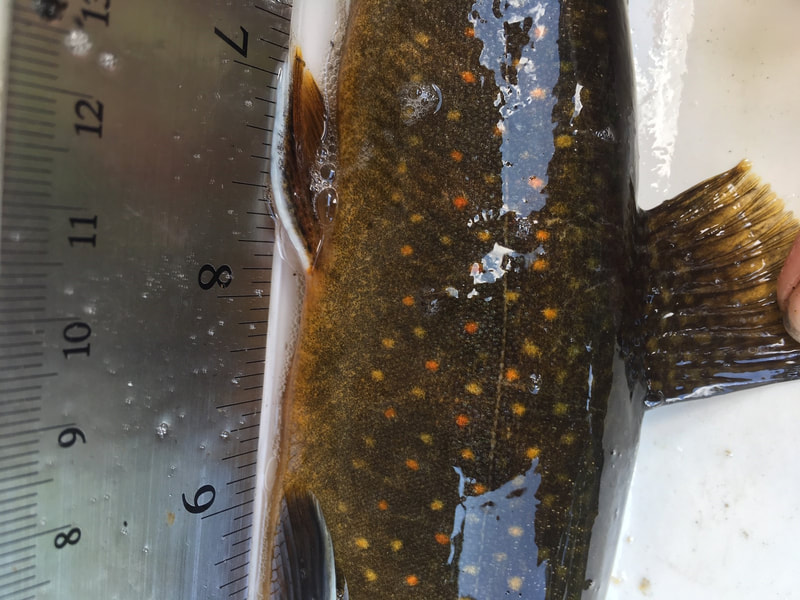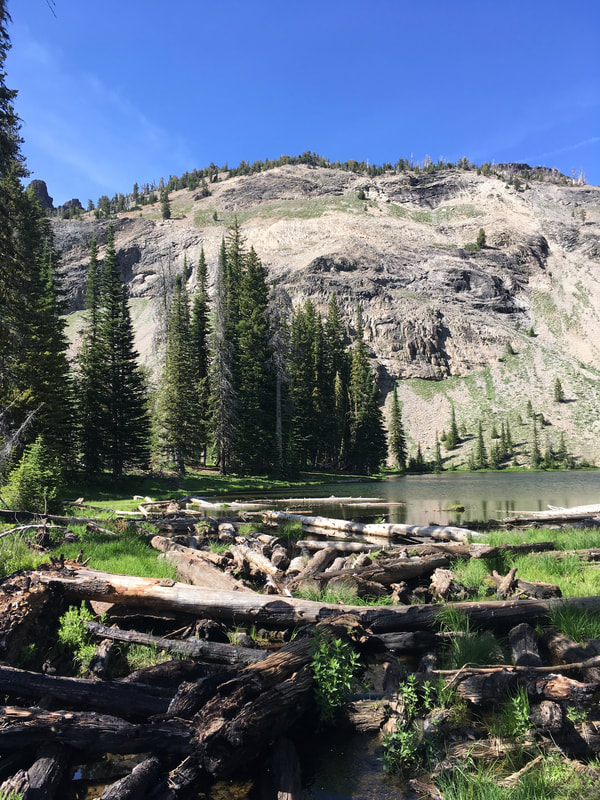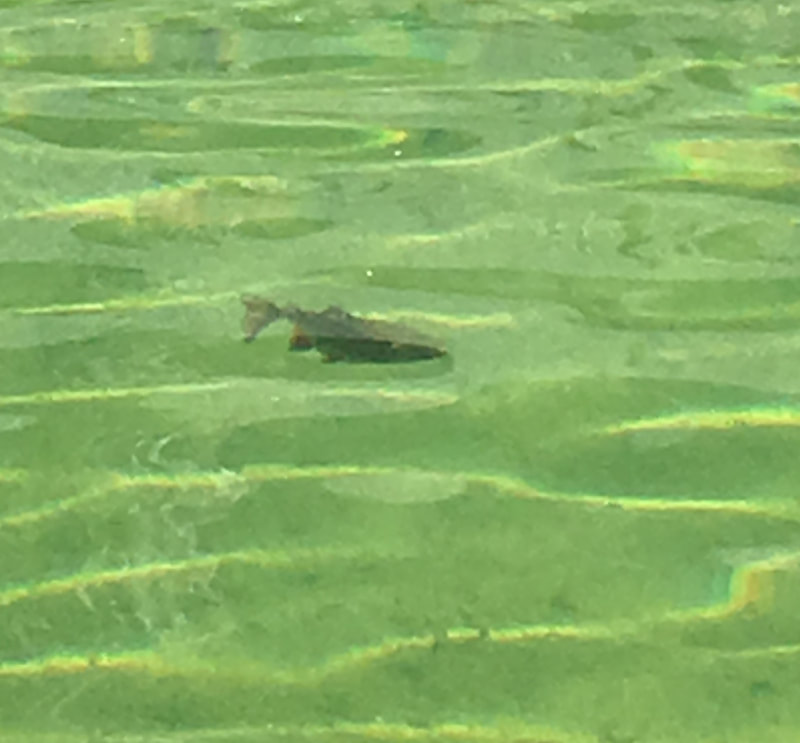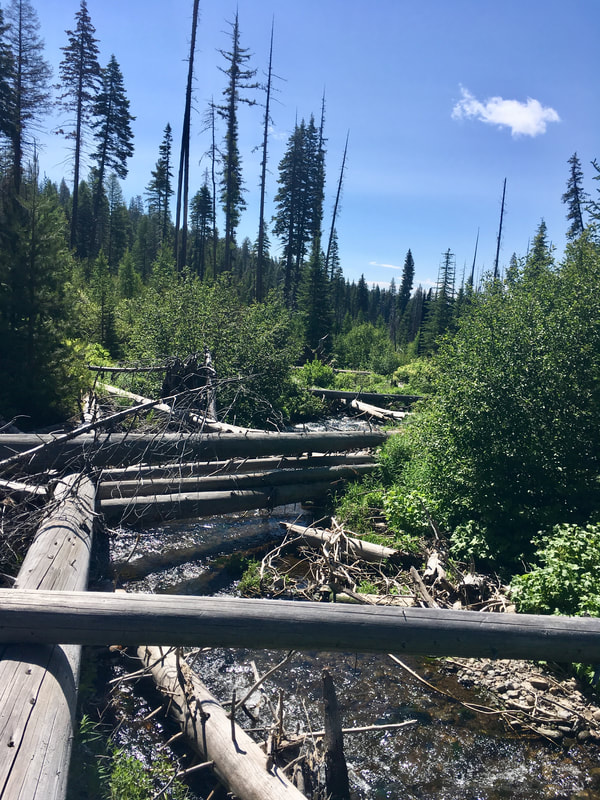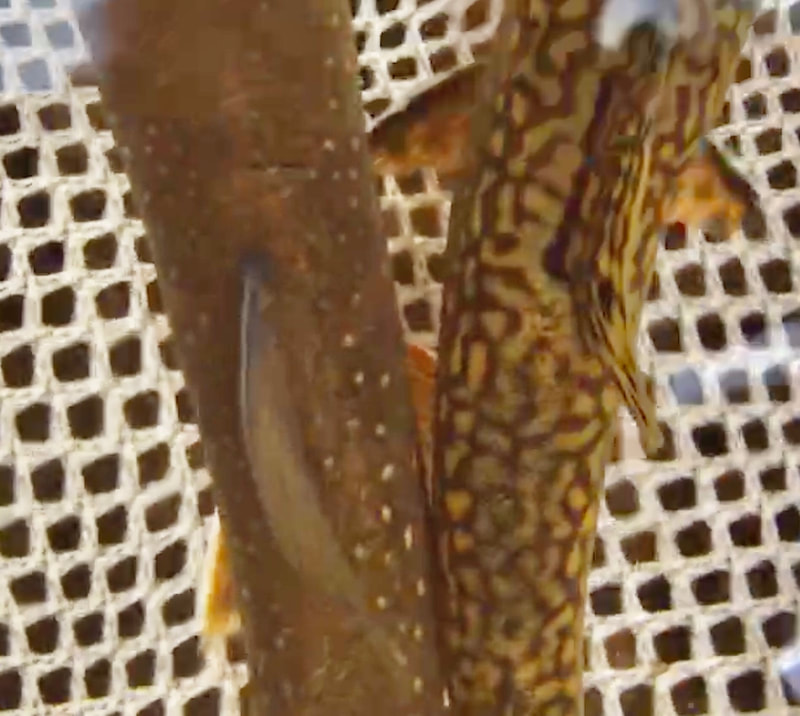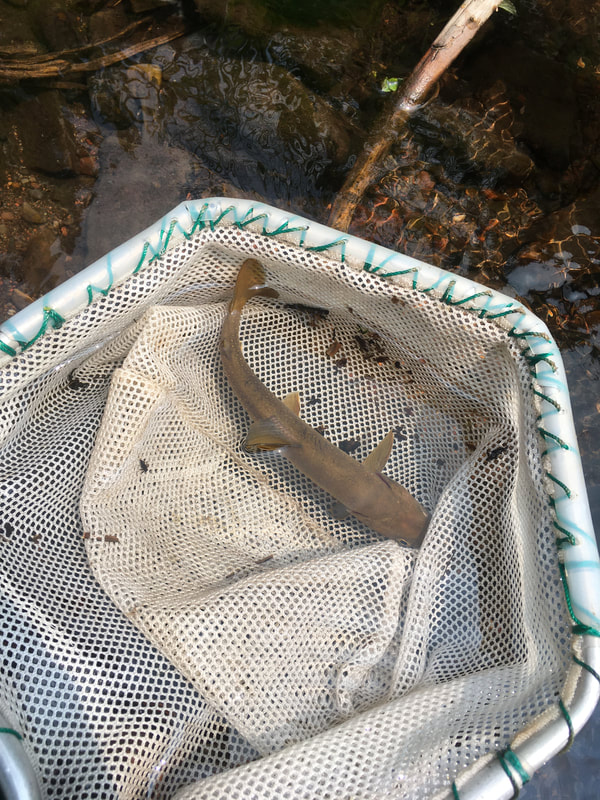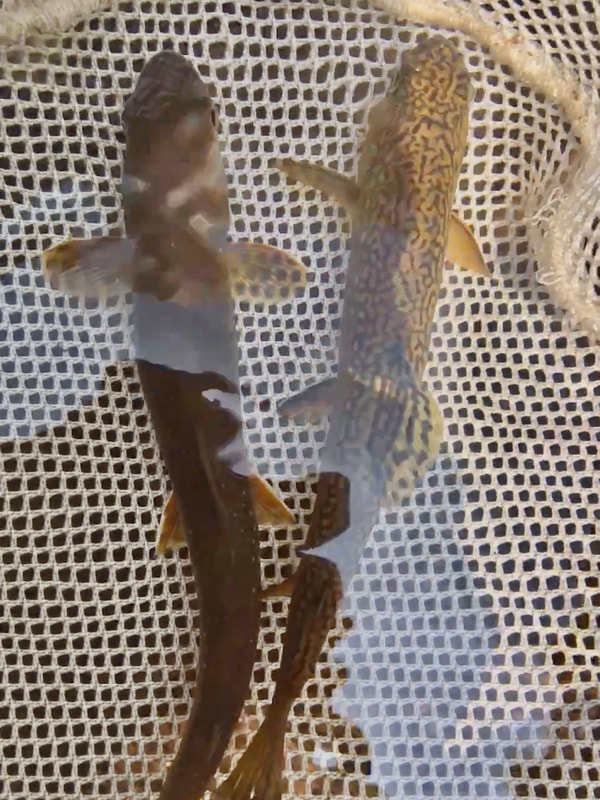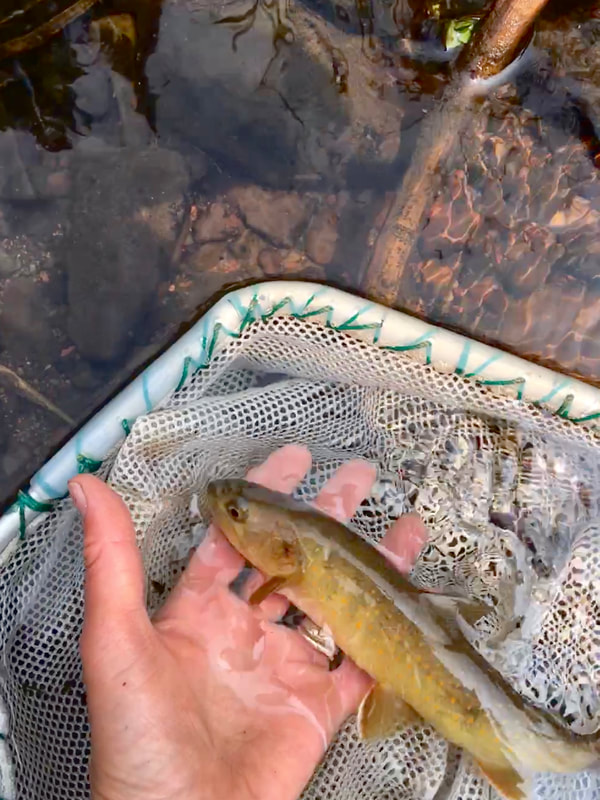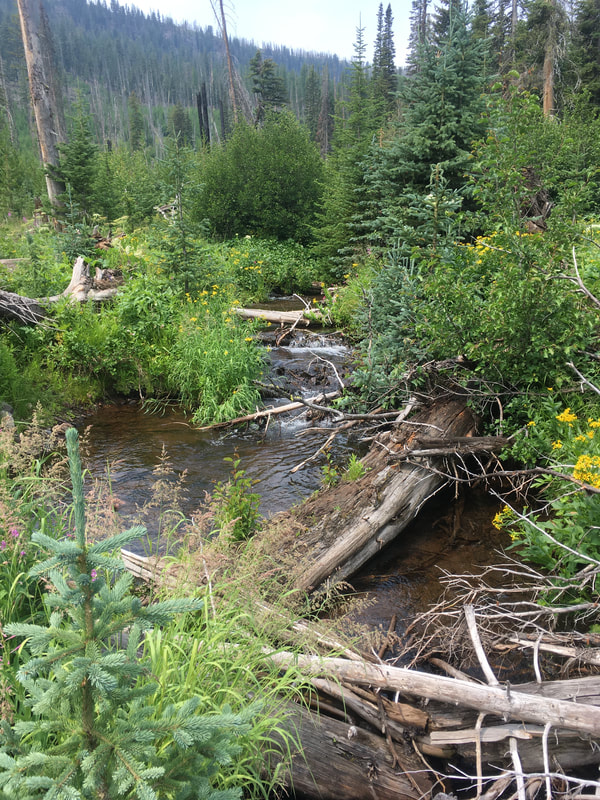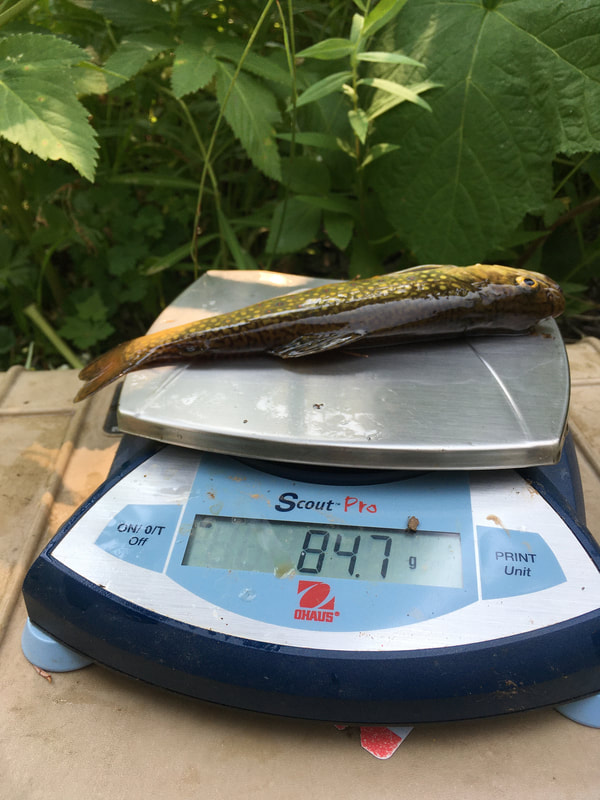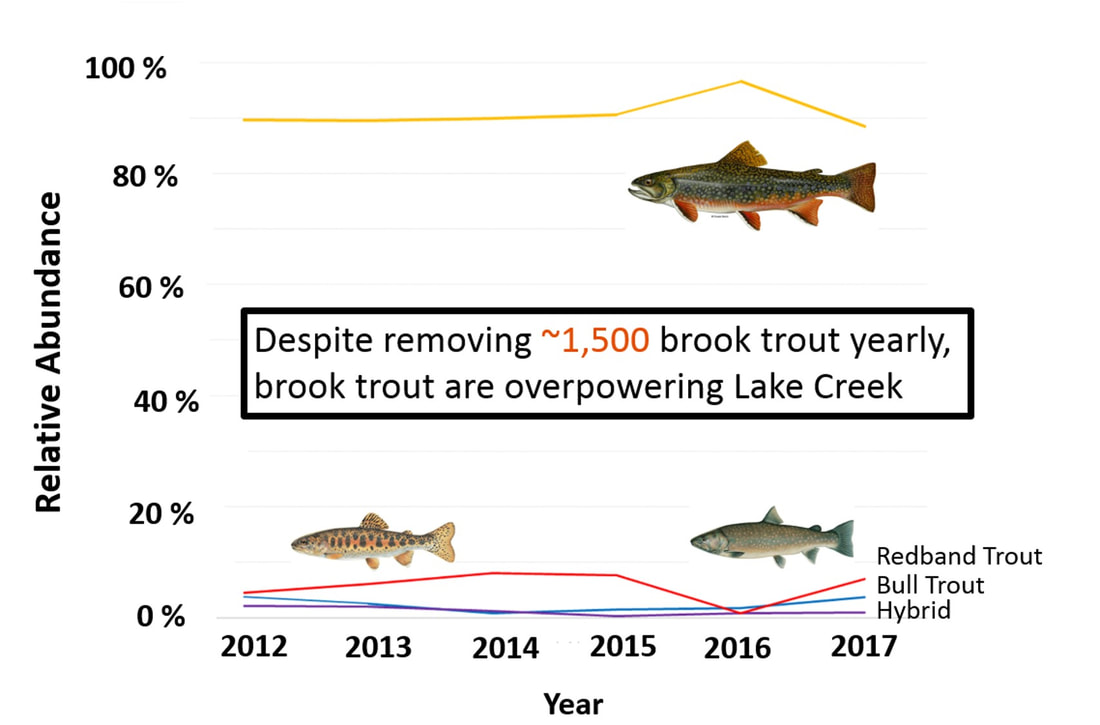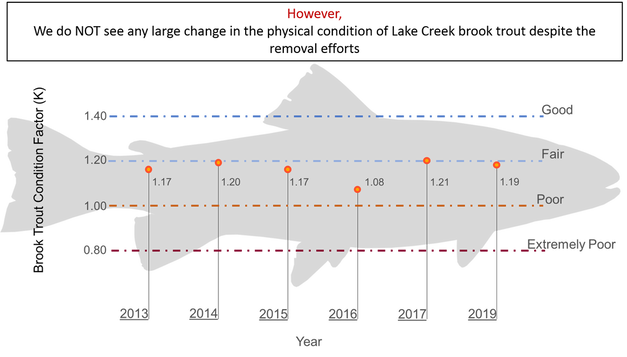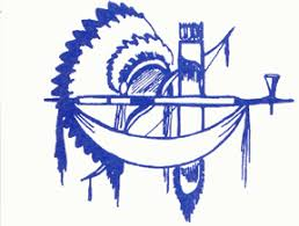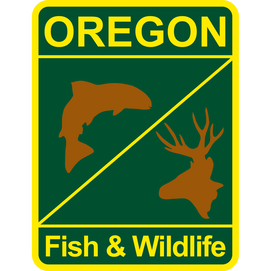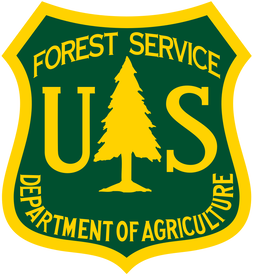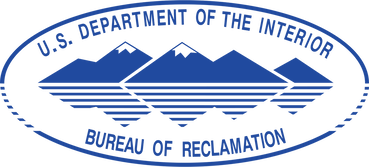CURRENT MANAGEMENT FOCUS
Eliminate the Greatest Threat
Targeted Removal of Brook Trout from Lake Creek
Lake Creek flows out of High Lake in the Strawberry Mountain Wilderness, OR. Brook trout introduced into High Lake in the early 1900’s provide a constant ‘seed source’ to the growing Lake Creek brook trout population. Non-native brook trout in Lake Creek are the greatest threat to bull trout through resource competition and hybridization.
In 2012, the Burns Paiute Tribal Fisheries Program conducted a population estimate of brook trout in Lake Creek and began attempts to recover bull trout by suppressing the brook trout population through ‘mechanical means’ (electrofishing and gillnetting). Using these methods, tribal fishery biologists are currently working to eradicate brook trout from Lake Creek and High Lake. Mechanical removal is a necessary and important step in the recovery of bull trout.
Every year, the mechanical removal of brook trout lessens pressure on the struggling populations of bull and redband trout in Lake Creek.
Targeted Removal of Brook Trout from Lake Creek
Lake Creek flows out of High Lake in the Strawberry Mountain Wilderness, OR. Brook trout introduced into High Lake in the early 1900’s provide a constant ‘seed source’ to the growing Lake Creek brook trout population. Non-native brook trout in Lake Creek are the greatest threat to bull trout through resource competition and hybridization.
In 2012, the Burns Paiute Tribal Fisheries Program conducted a population estimate of brook trout in Lake Creek and began attempts to recover bull trout by suppressing the brook trout population through ‘mechanical means’ (electrofishing and gillnetting). Using these methods, tribal fishery biologists are currently working to eradicate brook trout from Lake Creek and High Lake. Mechanical removal is a necessary and important step in the recovery of bull trout.
Every year, the mechanical removal of brook trout lessens pressure on the struggling populations of bull and redband trout in Lake Creek.
|
|
2023 gillnetting efforts in High Lake to remove invasive brook trout
2021 mechanical removal efforts work to Remove invasive brook trout to RECOVER native bull trout
But, mechanical removal is limited
Despite strategic removal efforts through gill-netting and electrofishing, the Lake Creek Brook Trout population remains strong.
Despite strategic removal efforts through gill-netting and electrofishing, the Lake Creek Brook Trout population remains strong.
Burns Paiute Tribal Fisheries Annual Report Findings:
Even though an estimated 30% of the brook trout population has been removed since 2010, Lake Creek bull trout are struggling to recover. While the population of brook trout remains high, managers suspect bull trout populations are not stabilizing, instead, they are fighting decline.
Why?
Biologists believe the population of introduced brook trout in Lake Creek quickly rebounds even after intensive removal efforts.
For example, The Burns Paiute Tribe removal efforts were cancelled due to wildfires in 2013 and 2015. The following year’s population data suggested that the brook trout population had rebounded to ‘pre-treatment levels.’ This is credited to High Lake and Upper Lake Creek acting as a ‘seed source’ for the overall brook trout population. Mechanical removal efforts have been critical in the preservation of Lake Creek's bull trout, however agencies are collaborating to do more. The Technical Advisory Committee is working on recovery plans aiming at expanding brook trout removal efforts.
Even though an estimated 30% of the brook trout population has been removed since 2010, Lake Creek bull trout are struggling to recover. While the population of brook trout remains high, managers suspect bull trout populations are not stabilizing, instead, they are fighting decline.
Why?
Biologists believe the population of introduced brook trout in Lake Creek quickly rebounds even after intensive removal efforts.
For example, The Burns Paiute Tribe removal efforts were cancelled due to wildfires in 2013 and 2015. The following year’s population data suggested that the brook trout population had rebounded to ‘pre-treatment levels.’ This is credited to High Lake and Upper Lake Creek acting as a ‘seed source’ for the overall brook trout population. Mechanical removal efforts have been critical in the preservation of Lake Creek's bull trout, however agencies are collaborating to do more. The Technical Advisory Committee is working on recovery plans aiming at expanding brook trout removal efforts.
|
Neighboring streams reveal the opposite trend
Lake Creek is dominated by invasive brook trout. However, the neighboring stream Meadow Fork shows us that when there isn't a 'seed source' brook trout population, native fish populations have a better chance at competing with brook trout. These two BPT population studies make it clear that eradicating brook trout in the Upper Malheur would be worth the effort. Upper Malheur headwaters are valuable habitat for native fish!
The neighboring stream (Meadow Fork) provides evidence that native fish populations can thrive when the habitat is not dominated by brook trout. |
BPT biologists hypothesized:
If, we were effectively removing brook trout from Lake Creek using electrofishing, we would see an increase in the body condition of the trout caught the following year. By removing brook trout, we would likely be removing competition. Every year the remaining brook trout would be in better condition due to having more food to eat. (K) is the mean calculation from the lengths and weights of ~100 brook trout/per year
Condition categories (good/fair/poor) found in: Barnham, C. & Baxter, A. 1998. Condition Factor, K, for salmonid fish. Fisheries Notes. |
** These studies can be found in the BPT Fisheries Annual Reports which are available on the BPT Natural Resource web page: www.bptnr.com
The Malheur River Bull Trout
Technical Advisory Committee
Contributing Agencies and Participants
Please click on the agency logo to go to their website for more information
Please click on the agency logo to go to their website for more information
AboutThe Help Native Fish educational materials were created in 2018 to raise awareness about what people who live, work, and recreate near riparian areas can do to help native fish. Currently the materials have been implemented throughout Eastern Oregon.
Our teamThe Technical Advisory Committee of the Malheur River Working Bull Trout Group includes Oregon Department of Fish and Wildlife, Bureau of Reclamation, US Fish and Wildlife Service, the US Forest Service, and the Burns Paiute Tribe. The Technical Advisory Committee is coordinated by the Burns Paiute Tribe Natural Resources Department.
|
Questions about what you can do or want to learn more?
Contact the fisheries manager at the Burns Paiute Tribe by using the contact form below. |
